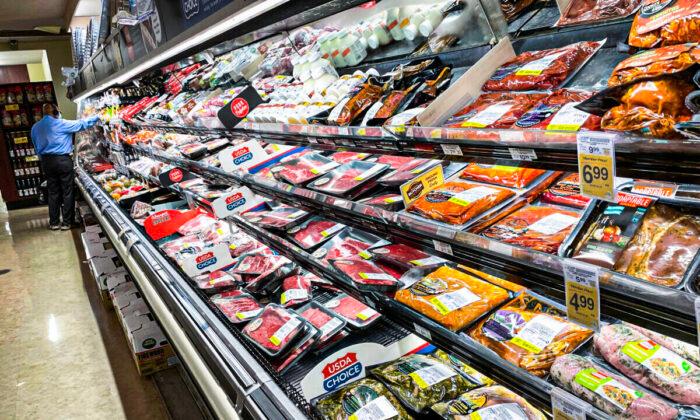With prices of commodities rising due to the COVID-19 pandemic and supply chain disruptions, inflation has hit grocery stores across the United States as brands increase product prices to prevent corporate profits from being squeezed.
P&G, which sells skincare products, shampoo, diapers, and toothpaste, raised product prices by 5 percent to achieve 10 percent sales growth in the first three months of 2022. Bottled water and yogurt company Danone achieved its sales growth target in the first quarter by passing on some of the costs to the customer. Beer manufacturer Heineken’s “assertive pricing” helped it hit a net revenue growth of 24.9 percent during this period, according to
Fortune.
The Consumer Price Index (CPI), a measure of inflation, rose 1.2 percent in March, according to data (
pdf) from the U.S. Bureau of Labor Statistics. The 12-month inflation rate was at 8.5 percent, the highest since December 1981. The food at home index rose by 10 percent in the past year, the biggest such increase since March 1981.
Retail sales rose in March according to the National Retail Federation (NRF). This shows that customers have maintained their ability to spend despite multiple issues like inflation, geopolitical unrest, and supply chain snarls, NRF President and CEO Matthew Shay said in an April 14
press release.
“Consumers are adapting and shopping smarter for themselves and their families. We believe the strength of the consumer can carry the economy through this considerable economic uncertainty if policymakers implement measured policies and do not overreact to current conditions,” Shay said.
High inflation is not looking at subsiding any time soon. Analysts at Bank of America recently
stated in a note that they expect food inflation in the country to hit 9 percent by the end of this year.
“Looking ahead, we think that consumers will continue to feel the pinch of elevated food inflation,” the analysts wrote. “While there has been a lot of attention on the shock from the Russia-Ukraine conflict, we believe that it is too early to see the impact at the grocery store … rather, it should lead to sustained price increases later this year.”
A brand that has raised prices previously and plans to continue with the strategy is Nestle, the world’s biggest food and beverages company. In the first quarter, it passed on the rising production costs to shoppers by increasing the prices of end products by over 5 percent. The most hit were consumers in North America who saw sticker prices rise by 8.5 percent.
“We stepped up pricing in a responsible manner and saw sustained consumer demand. Cost inflation continues to increase sharply, which will require further pricing and mitigating actions over the course of the year,” the CEO
said in an April 21 press release.





